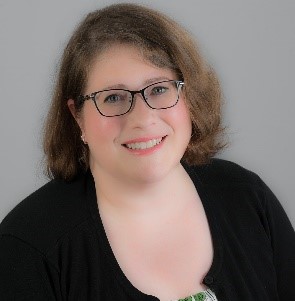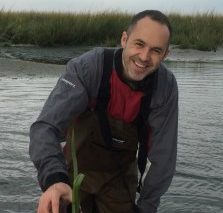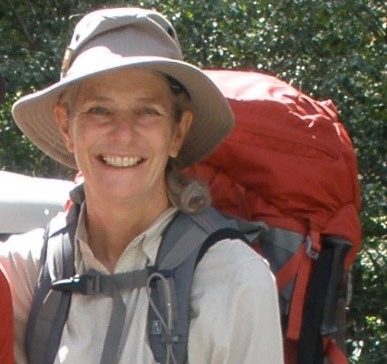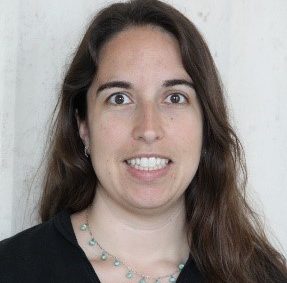Agenda
Download a PDF of the ECAEC17 agenda.
Keynote Speakers
Contaminants of emerging concern during de facto water reuse*
 Susan Glassmeyer – Research Chemist, United States Environmental Protection Agency
Susan Glassmeyer – Research Chemist, United States Environmental Protection Agency
Abstract: Our drinking water and wastewater cycles are integrally linked. Chemicals that are present in household wastewater may be sufficiently mobile and persistent to survive both on-site or municipal wastewater treatment and post-discharge environmental processes. Thus, such contaminants have the potential to reach surface water and groundwater that can be sources of drinking water. The U.S. Environmental Protection Agency (USEPA) and U.S. Geological Survey (USGS) are collaborating on a project examining the sources, fate, and potential effects of contaminants of emerging concern (CECs) during de facto water reuse. The Lagrangian sampling design follows a surface water flowpath, collecting water samples in a stream from just above a wastewater treatment plant outfall and following the water parcel downstream to a drinking water treatment plant intake and subsequently through to finished drinking water. The study uses an integrated approach, including comprehensive chemical analysis (e.g., pharmaceuticals, perfluorinated chemicals, hormones, etc.), environmental diagnostics to identify non-target, unknown chemicals, in vitro bioassays (e.g., estrogenicity, androgenicity, genotoxicity, toxicity in metabolizing cells), rapid whole organisms screens (e.g., Microtox) to assess cumulative bioactivity, and in vivo tests to address specific exposure and response endpoints. A rigorous quality assurance/quality control protocol design was consistently applied from field to laboratory to ensure comparability of results between the variety of techniques employed. This consistent, integrated approach combines the strength of each technique and is ideal for CEC-related research in which traditional environmental and toxicity endpoints are not adequate for fully understanding potential effects from chemical exposures on human and environmental health. This presentation provides an overview of the study, discussing the project design and preliminary results from three separate sampling campaigns.
Biography: Susan T. Glassmeyer is a research chemist in the US Environmental Protection Agency’s Office of Research Development, National Exposure Research Laboratory. Dr. Glassmeyer earned a B.S. in chemistry from Xavier University, and a M.S.E.S. degree in environmental chemistry and Ph.D. in environmental science from Indiana University. Dr. Glassmeyer’s research is focused on contaminants of emerging concern (CECs) – both chemicals such as pharmaceuticals as well as microorganisms – in the water cycle. She has coordinated several projects examining the occurrence, fate and transport of CECs in wastewater, surface water, groundwater, and drinking water.
*The video for this presentation is not available.
Microplastic and anthropogenic litter in rivers is abundant, mobile, and selects for unique bacterial assemblages
 Tim Hoellein – Assistant Professor, Loyola University Chicago
Tim Hoellein – Assistant Professor, Loyola University Chicago
Abstract: Accrual of anthropogenic litter (AL; trash such as plastic), is an emerging concern in ecosystems worldwide. The study of AL’s origin, redistribution, microbial colonization, and consumption has revealed new insights into basic processes in marine ecology. While AL research in freshwaters lags behind, research on AL in rivers is needed to understand fundamental processes in urban streams, and to inform global estimates of AL budgets and movement. For this research, tools of ecosystem and community ecology (i.e., organic matter movement and biological communities) were adapted to study AL dynamics in urban streams in several individual research projects. AL was separated into size classes that spanned a gradient from fine particles (microplastic, < 5 mm), to intermediate-sized materials (plastic bags, food packaging), to large immobile items (construction debris). Studies examined the capacity of AL to affect basic ecosystem characteristics, including 1) controls on downstream fluxes of particulate and dissolved compounds, 2) effects of surface characteristics on biofilm community composition and activity, and 3) habitat heterogeneity and organic matter retention. Results show that anthropogenic litter is abundant, diverse, and mobile, with a diversity of chemical and biological interactions at all spatial scales. The study of anthropogenic litter and microplastic will enhance our understanding of ecosystem processes and communities in urban rivers. In addition, these studies will unite the early stages of the AL ‘life cycle’ in streams with its later, well-studied stages of accumulation in global oceans.
Biography: Originally from Edinboro, Pennsylvania, Dr. Tim Hoellein completed a B.S. in biology from West Virginia Wesleyan College and a Ph.D. in biology at the University of Notre Dame. He arrived at Loyola University Chicago in Fall 2010 after spending 2 years as an assistant professor in Baruch College, New York City. Dr. Hoellein’s research focuses on water pollution including dissolved chemicals (i.e., nitrogen and phosphorus) and particulate material (i.e., microplastics and trash) in urban environments. He is interested in the ecology of pollution in aquatic ecosystems: how it is broken down and how it interacts with aquatic organisms. Dr. Hoellein’s overarching goals for this research are to contribute to a greater understanding of the sources and solutions to a wide array of pollutants, to incorporate students and teaching into the work, and to communicate his results with other scientists and the general public. It’s his hope this will lead to application of the research towards improved prevention and management strategies.
PAHs and coal tar—old contaminants with emerging concerns
 Barbara Mahler – Research Hydrologist, United States Geological Survey
Barbara Mahler – Research Hydrologist, United States Geological Survey
Abstract: Sealcoat is the black, viscous liquid sprayed or painted on many asphalt parking lots, driveways, and playgrounds to protect and enhance the appearance of the underlying asphalt. Dr. Mahler will discuss results of studies by the U.S. Geological Survey (USGS), academic institutions, and state and local agencies that have identified coal-tar-based pavement sealcoat as a major source of polycyclic aromatic hydrocarbon (PAH) contamination and a potential concern for human health and aquatic life.
Biography: Barbara Mahler, Ph.D., P.G., is a research hydrologist at the USGS in Austin, TX, where she is a geochemist for the Regional Stream Quality Assessment team. Research by Dr. Mahler and her colleagues has been instrumental in identifying and quantifying the importance of coal-tar-based parking lot sealcoat as a source of PAHs at the national scale (tx.usgs.gov/sealcoat.html). Dr. Mahler’s research includes evaluating contaminant sources, including rooftop runoff, suspended sediment in streams, contaminated runoff from parking lots, and house dust.
Untangling the legal web surrounding emerging contaminants
 Stephanie Showalter Otts – Director of the National Sea Grant Law Center and the Mississippi-Alabama Sea Grant Legal Program, University of Mississippi School of Law
Stephanie Showalter Otts – Director of the National Sea Grant Law Center and the Mississippi-Alabama Sea Grant Legal Program, University of Mississippi School of Law
Abstract: There is no overarching legal framework in the United States designed to the address environmental and public health risks from emerging contaminants. Policymakers and regulators respond to these threats through a patchwork of federal and state laws, regulations, and programs designed to deal with drinking water safety, water pollution, and consumer product safety. The relevant laws and policies vary depending on the type of contaminant and its source. This presentation will provide an overview of the primary federal laws used to manage emerging contaminants, including the Clean Water Act and the Safe Drinking Water Act. State authority to address pollution concerns will also be discussed, as well as challenges that can arise when state standards differ from federal standards. Case studies of recent legislative efforts to address microplastics and other emerging contaminants will be used to illustrate the complexities of the existing legal regime. Finally, this presentation will explore the role that science plays in the policy and regulatory discussions surrounding emerging contaminants.
Biography: Stephanie Showalter Otts is the Director of the National Sea Grant Law Center and the Mississippi-Alabama Sea Grant Legal Program at the University of Mississippi School of Law. Ms. Otts received a B.A. in history from Penn State University and a joint J.D./Masters of Studies in environmental law from Vermont Law School. She is licensed to practice law in Pennsylvania and Mississippi. As Director, Ms. Otts oversees a variety of legal education, research, and outreach activities, including providing legal research services to Sea Grant constituents on ocean and coastal law issues. Her duties also include the supervision of law student research and writing projects and providing assistance to organizations and governmental agencies with interpretation of statutes, regulations, and case law. Ms. Otts also teaches a foundational course on ocean and coastal law at the University of Mississippi School of Law. Her research on natural resources, marine, and environmental law issues has been published in a variety of publications. She has conducted extensive research on marine and freshwater invasive species.